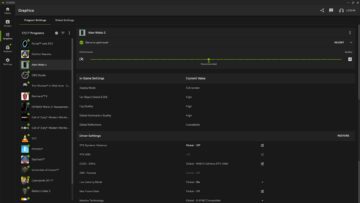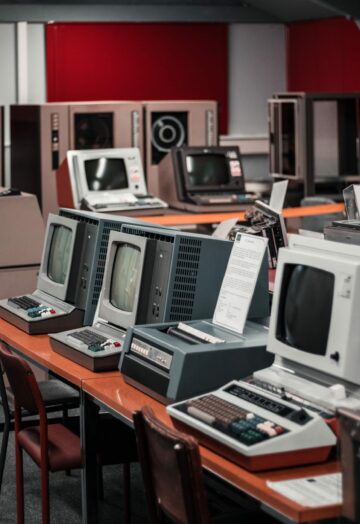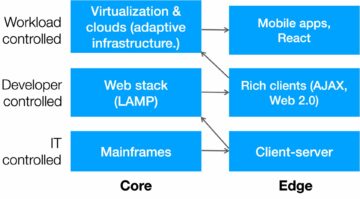
Non-fungible tokens (NFTs) have been making waves since 2014, especially in the last two years. The concept of a non-fungible digital asset, one that you cannot easily exchange on a one-to-one basis like cryptocurrencies, emerged as a way to represent ownership and scarcity in the digital world. As with anything scarce, these conditions have led to a focus on NFTs becoming the latest nugget in the blockchain gold rush. And that is the problem.
During the California Gold Rush, a relatively small number of people became truly rich and achieved significant wealth, while the majority either experienced modest gains or ended up with minimal financial success, often struggling to meet their basic needs due to the high living costs in gold mining regions.
In the case of NFTs, those costs include the complexity and technical knowledge needed to acquire them. And while the riches have been some of the most significant in recent times, the NFT industry also suffers from the same level of speculation, notoriety, and scrutiny as those transformative ’40s and ’50s.
But to think of NFTs only in terms of quick financial gains is short-sighted, according to Sander Gansen, founder at NFT Tallinn – the NFT conference I attended in May. I spent some time discussing non-fungible tokens’ past, present, and future and the underlying technologies that power them.
“Reducing the value of NFTs solely to monetary gain overlooks the true power of this technology, which lies in its ability to revolutionize ownership, provenance, and the democratization of creative expression,” Gansen told me. “NFTs represent a groundbreaking technology that can transform how we perceive and interact with digital assets, particularly in art and collectibles, and also physical assets by introducing digital twins that help us verify their ownership and provenance.”
Money don’t matter
Since the Colored Coins project in 2012 and the CryptoKitties craze of 2017 (which at one point was so popular it functionally broke the Ethereum blockchain), the NFT market has expanded into various domains, including art, music, gaming, and collectibles. Artists and creators have started utilizing NFTs to sell digital artwork and authenticate their creations, allowing for direct ownership and provenance tracking. Even bigwig auction houses like Christie’s have even held NFT art auctions, attracting significant attention and high-priced sales.
NFTs are being used in supply chains, fashion, and loyalty programs. Sadu – an app that converts your exercise into planting trees and other carbon removal projects – rewards you with NFTs as you reach certain milestones. AirBaltic has its Planies program, an NFT that allows you to gain air miles without flying.
On the flip side, the collapse of Terra and the volatility witnessed in the world of cryptocurrencies has led to some claiming that NFTs are already finished as a trend, but arguably that is because the only indicators being used to predict its fall are lines and candlesticks.
“While the monetary aspect of NFTs has understandably garnered significant attention, it is crucial to acknowledge that their value goes far beyond money,” Gansen said. “NFTs can revolutionize ownership, provenance, and the way we engage with digital art, opening up new possibilities for creators and collectors alike.”
Of course, NFTs can only do that if they sustain interest. While anecdotally, the sector has seen a dip, data suggests otherwise. According to DappRadar, the market continues to grow and evolve despite that volatility, with new technology and platforms supporting the rising demand. In 2022, NFT sales skyrocketed. In Q1, sales reached 28.44 million, a 483.14% increase from Q1 2021’s 4.88 million. Q2 2022 saw 20.23 million NFTs sold, a 73.87% rise from Q2 2021’s 11.64 million.
But digital art, including images, videos, and music – while obvious uses of NFT technology – aren’t where the magic will happen, according to Gansen.
“NFT technology has expanded beyond digital art and collectibles to encompass tokenizing real-world assets, enabling ownership of in-game items and virtual land, verifying digital identities and credentials, fostering fan engagement and social tokens, enhancing supply chain traceability, and supporting charitable donations and fundraising efforts,” Gansen said. “These diverse applications demonstrate the versatility of NFTs across industries, providing new avenues for ownership, engagement, and transparency in the digital and physical realms.”
For example, the first “real world real estate” NFT was sold in 2017 and was recently re-auctioned through Propy, a blockchain-based real estate solution. Plenty of virtual real estate has been sold through platforms such as Decentraland. The potential of NFT technology lies in its ability to tokenize and sell tangible assets that people can live in, not just visit through a screen or a headset, complete with their full-body, banana-suited avatars.
Why is NFT technology a better way to sell houses than how we do it now?
“Each blockchain ledger provides a history of every step and transaction for every asset, and that’s a lot of information,” Gansen said. “For example, using NFT technology in real estate allows you to check every previous buyer, investment, action, legal dispute, payment, and more. In addition, you’re cutting out all the middle people, which makes buying property additionally expensive, and the speed of buying and selling your property increases massively. People love it when you save them time and money.”
If you want NFTs to rise, stop talking about NFTs
When did you last ask someone to check out your pocket-sized, multi-functional, hyperconnected device equipped with advanced computational capabilities and communication protocols? In fact, when was the last time you asked someone to check out your smartphone at all?
If we tighten that analogy, when was the last time a startup successfully sold you their app, product, or solution by advertising it as their latest “Kotlin/Java/[insert programming language here] technology project?” People don’t talk like that unless they are trying to impress an investor that wants to ride a bleeding edge bandwagon, and consumers both don’t care and would be confused.
“Uber revolutionized the transportation industry by providing a convenient and efficient way for users to request rides with just a few taps on their smartphones,” Gansen said. “I didn’t care what programming language or underlying technology it was created with. I just cared that getting a taxi was easier than ever, cheaper, and more convenient for me and my friends.”
According to Gansen, talking about something other than NFT technology and the associated blockchain/cryptocurrency industry carries an additional benefit.
“While Bitcoin and Ethereum have moved into the daily conversation thanks to mainstream media, so has a string of high-profile scams, failures, and daylight robberies,” Gansen said. “The industry is known as much for Ponzi schemes, vaporware, and data and financial breaches as it is for its potential to revolutionize our world, so the less we talk about it, the better. Instead, if NFT and blockchain technology are the best way to solve a problem, let’s just use it and show everyone the solution we created instead.”
Gansen’s ideals and principles extend beyond NFTs and are born from his personal experiences of rise and fall.
“In 2015, I founded a supply chain startup and raised significant funding, yet we weren’t able to the right product, prompting my departure in 2017,” Gansen said. “In 2019, I returned to that same startup and helped sell the IP. I built a global franchise of robotics and AI events, and after starting a successful marketing agency experienced the impact of COVID-19. During the pandemic, I ventured into the world of Web3 and NFTs.”
Those experiences led to him creating NFT Tallinn, which has already become the biggest NFT conference in the Nordics.
“We have embraced the community we built, leaped between endeavors, crafted demos, sought collaborations, and poured our energy into the NFT Tallinn, something we had initially conducted as an experimental trial,” Gansen said. “While some ventures didn’t pan out, the event garnered resounding feedback, and it is now our mission to elevate it to new heights, expanding its scale and audacity, including similar initiatives in South America, the Balkans, and possibly even Africa.”
The underlying principle of speaking less about NFT technology and more about the solutions it offers to the world is at the core of what Gansen is attempting to achieve, as are the uncommon decisions that amplify what makes this event different from the likes of NFT.NYC and Miami NFT Week.
“By choosing to host such a big and audacious event in Tallinn, we raised some eyebrows,” Gansen said. “However, In the realm of information technology, Estonia reigns as the triumphant Nordic nation, boasting unparalleled business ambiance across Europe and a large pool of exceptional talent. From ingenious Web3 innovations like Alphabill, DeCommas, Dottyland, Ready Player Me, and Solid World to our unrivaled expertise in cryptography for three decades, Estonia’s prowess is unmatched. One might ponder: if not within Estonia, then where else?”
To underline that we should speak less about NFT technology and more about what it does for us, NFT Tallinn was full of great examples, including beer from Metabrew, event tickets from Enter, and Videomart Club.
NFTs aren’t dead or dying. That view is only valid if you are a speculator attempting to make a buck quickly from the technology industry’s latest darling. But if we stop talking about it and focus on what it can usefully do for us, its potential to transform how we interact with both the virtual and physical world is clear, and no doubt Gansen will continue to promote and explore this in his future events and other upcoming initiatives.
This article originally appeared on Hackernoon and is reproduced with permission.
- SEO Powered Content & PR Distribution. Get Amplified Today.
- PlatoAiStream. Web3 Data Intelligence. Knowledge Amplified. Access Here.
- Minting the Future w Adryenn Ashley. Access Here.
- Buy and Sell Shares in PRE-IPO Companies with PREIPO®. Access Here.
- Source: https://dataconomy.com/2023/05/23/nfts-arent-dying-or-dead-but-stop-talking-about-them-says-sander-gansen/
- :has
- :is
- :not
- :where
- $UP
- 1
- 11
- 20
- 2012
- 2015
- 2017
- 2019
- 2022
- 23
- 250
- 28
- a
- ability
- Able
- About
- about IT
- According
- Achieve
- achieved
- acknowledge
- acquire
- across
- Action
- addition
- Additional
- additional benefit
- Additionally
- advanced
- Advertising
- africa
- After
- agency
- AI
- AIR
- airBaltic
- alike
- All
- Allowing
- allows
- already
- also
- ambiance
- america
- an
- and
- anything
- app
- appeared
- applications
- ARE
- arguably
- Art
- article
- Artists
- artwork
- AS
- aspect
- asset
- Assets
- associated
- At
- attempting
- attention
- attracting
- Auction
- Auctions
- audacious
- authenticate
- Avatars
- basic
- basis
- BE
- became
- because
- become
- becoming
- been
- beer
- being
- benefit
- BEST
- Better
- between
- Beyond
- Big
- Biggest
- Bitcoin
- bitcoin and ethereum
- Bleeding
- Bleeding Edge
- blockchain
- Blockchain gold
- blockchain technology
- blockchain-based
- boasting
- born
- both
- breaches
- Broke
- built
- business
- but
- Buying
- by
- california
- CAN
- cannot
- capabilities
- carbon
- care
- case
- certain
- chain
- chains
- cheaper
- check
- choosing
- Christie’s
- claiming
- clear
- Coins
- collaborations
- Collapse
- collectibles
- collectors
- COM
- Communication
- community
- complete
- complexity
- concept
- conditions
- conducted
- Conference
- confused
- Consumers
- content
- continue
- continues
- Convenient
- Conversation
- Core
- Costs
- course
- COVID-19
- created
- Creating
- creations
- Creative
- creators
- Credentials
- crucial
- cryptocurrencies
- cryptography
- Cryptokitties
- cutting
- daily
- DappRadar
- darling
- data
- daylight
- dead
- decades
- Decentraland
- decisions
- Demand
- democratization
- demonstrate
- Demos
- Despite
- device
- DID
- different
- digital
- Digital Art
- digital artwork
- Digital Asset
- Digital Assets
- Digital twins
- digital world
- Dip
- direct
- discussing
- Dispute
- diverse
- do
- does
- domains
- donations
- Dont
- doubt
- due
- during
- Dying
- easier
- easily
- Edge
- efficient
- efforts
- either
- ELEVATE
- else
- embraced
- emerged
- enabling
- encompass
- end
- endeavors
- energy
- engage
- engagement
- enhancing
- equipped
- especially
- estate
- estonia
- ethereum
- Ethereum blockchain
- Europe
- Even
- Event
- events
- EVER
- Every
- everyone
- evolve
- example
- examples
- exceptional
- exchange
- Exercise
- expanded
- expanding
- expensive
- experienced
- Experiences
- expertise
- explore
- expression
- extend
- fact
- Fall
- fan
- far
- Fashion
- feedback
- few
- financial
- financial success
- First
- Flip
- flying
- Focus
- For
- fostering
- Founded
- founder
- Franchise
- friends
- from
- full
- functionally
- funding
- Fundraising
- future
- Gain
- Gains
- gaming
- getting
- Global
- Goes
- Gold
- Gold Mining
- great
- groundbreaking
- Grow
- had
- happen
- Have
- Headset
- heights
- Held
- help
- helped
- here
- High
- high-profile
- him
- his
- history
- host
- houses
- How
- HTTPS
- hyperconnected
- i
- identities
- if
- images
- Impact
- in
- in-game
- include
- Including
- Increase
- Increases
- Indicators
- industries
- industry
- industry’s
- information
- information technology
- initially
- initiatives
- innovations
- instead
- interact
- interest
- into
- introducing
- investment
- investor
- IP
- IT
- items
- ITS
- just
- knowledge
- known
- Land
- language
- large
- Last
- latest
- Led
- Ledger
- Legal
- less
- Level
- lies
- like
- lines
- live
- living
- Lot
- love
- Loyalty
- Loyalty programs
- magic
- Mainstream
- mainstream media
- Majority
- make
- MAKES
- Market
- Marketing
- marketing agency
- massively
- May..
- Media
- Meet
- Miami
- miami NFT
- Middle
- might
- Milestones
- million
- minimal
- Mining
- Mission
- modest
- Monetary
- money
- more
- most
- much
- Music
- my
- nation
- needed
- needs
- New
- NFT
- NFT Art
- nft market
- nft sales
- NFT technology
- NFT.NYC
- NFTs
- no
- non-fungible
- Nordics
- now
- number
- NYC
- obvious
- of
- Offers
- often
- on
- ONE
- only
- opening
- or
- Other
- otherwise
- our
- out
- ownership
- PAN
- pandemic
- particularly
- past
- payment
- People
- permission
- personal
- physical
- Planting
- planting trees
- Platforms
- plato
- Plato Data Intelligence
- PlatoData
- player
- Plenty
- Point
- ponder
- ponzi
- Ponzi Schemes
- pool
- Popular
- possibilities
- possibly
- potential
- power
- predict
- present
- previous
- principle
- principles
- Problem
- Product
- Program
- Programming
- Programs
- project
- projects
- promote
- property
- Propy
- protocols
- provenance
- provides
- providing
- prowess
- Q1
- Q2
- Q2 2022
- Quick
- quickly
- raised
- reach
- reached
- ready
- Ready Player Me
- real
- real estate
- real world
- realm
- recent
- recently
- regions
- relatively
- removal
- represent
- request
- resounding
- revolutionize
- revolutionized
- Rewards
- Rich
- Ride
- right
- Rise
- rising
- robotics
- rush
- Said
- sales
- same
- Save
- says
- Scale
- scams
- Scarce
- Scarcity
- schemes
- Screen
- sector
- seen
- sell
- Selling
- should
- show
- side
- significant
- similar
- since
- small
- smartphone
- smartphones
- So
- Social
- social tokens
- sold
- solid
- solution
- Solutions
- SOLVE
- some
- Someone
- something
- South
- South America
- speak
- speaking
- speculation
- speed
- spent
- started
- Starting
- startup
- Step
- Stop
- String
- Struggling
- success
- successful
- Successfully
- such
- Suffers
- Suggests
- supply
- supply chain
- Supply chains
- Supporting
- Talent
- Talk
- talking
- Tallinn
- Taps
- Technical
- Technologies
- Technology
- terms
- Terra
- than
- thanks
- that
- The
- the world
- their
- Them
- then
- These
- they
- Think
- this
- those
- three
- Through
- tickets
- time
- times
- to
- tokenize
- tokenizing
- Tokens
- Traceability
- Tracking
- transaction
- Transform
- transformative
- Transparency
- transportation
- Trees
- Trend
- trial
- true
- truly
- Twins
- two
- Uncommon
- underline
- underlying
- Understandably
- unmatched
- unparalleled
- unrivaled
- upcoming
- us
- use
- used
- users
- using
- Utilizing
- value
- various
- Ventures
- verify
- verifying
- Videos
- View
- Virtual
- virtual land
- virtual real estate
- Visit
- Volatility
- want
- wants
- was
- waves
- Way..
- we
- Wealth
- Web3
- web3 innovations
- week
- What
- when
- which
- while
- will
- with
- within
- without
- witnessed
- world
- would
- years
- yet
- you
- Your
- zephyrnet












